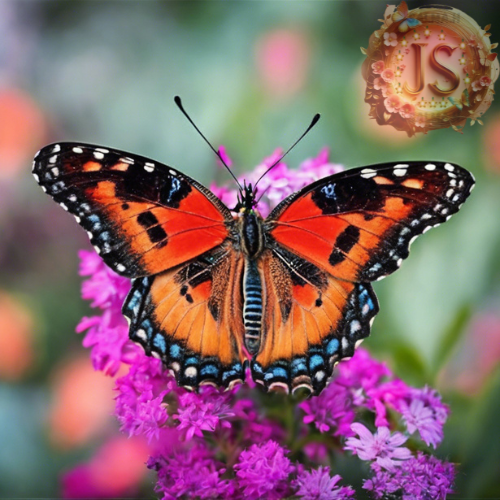Metamorphosis Unveiled: The Mysterious Transformation of a Caterpillar into a Butterfly - the most delicate and beautiful creature
- Salma H
- Oct 21, 2024
- 4 min read
Updated: Dec 24, 2024

Have you ever been fascinated by butterflies with their wonderful colours and sizes, how they majestically float by - well read on to find out more about these beautiful creatures.
The transformation from caterpillar to butterfly is one of nature’s most enchanting processes. Watching this dramatic change captures the imagination and inspires curiosity. How does this metamorphosis happen? In this blog post, we will explore the stages of metamorphosis and examine the remarkable life cycle of butterflies through detailed examples and insights.
The Butterfly Life Cycle Explained
To fully appreciate this stunning metamorphosis, it is crucial to understand the butterfly's complete life cycle. Butterflies progress through four distinct stages: egg, larva (caterpillar), pupa (chrysalis), and adult butterfly. Each stage plays a vital role in the transformation, leading to the emergence of a beautiful butterfly.
Here’s a closer look at these stages, each highlighting incredible growth and change.
1. Starting as an Egg

The journey of a butterfly begins with a tiny, oval-shaped egg often less than 2 millimeters long. Female butterflies lay their eggs on specific host plants, ensuring that the newly hatched caterpillars have immediate access to food.
In this stage, the eggs face numerous threats from predators like birds and parasites. Depending on the butterfly species—like the Monarch, whose eggs hatch in about 3 to 10 days—the time taken for the eggs to hatch varies significantly.
A fascinating survival strategy is that many butterfly eggs exhibit camouflage, which decreases their visibility to potential threats. For instance, the Swallowtail butterfly lays eggs that mimic the colors and patterns of their host plant's leaves.
2. The Caterpillar's Growth Phase
Upon hatching, the caterpillar emerges as a small, voracious eater. This phase is critical for its growth. The caterpillar's primary activity is eating, as it needs to accumulate energy to fuel its metamorphosis.

Caterpillars can grow rapidly, gaining up to 2,700 times their original weight in just a few weeks. They experience multiple instars, or developmental stages, often ranging from 5 to 6 instars before reaching full size. Each time, they shed their skin to accommodate their growing bodies.

One action tip for those interested in butterfly gardening is to plant host plants for caterpillars. For example, milkweed is essential for Monarch caterpillars.
3. The Pupa Stage: A Transformation in Process
When the caterpillar reaches its full size, it seeks a safe spot to enter the chrysalis stage. Often hanging upside down, the caterpillar forms a protective casing known as a chrysalis.
Inside, a remarkable transformation occurs. The caterpillar's body breaks down and reorganizes during this time, a process called histolysis, which takes about 7 to 14 days for many species, though some can remain in the pupal stage for several months, depending on environmental conditions.
This transformative environment enables the development of wings, antennae, and reproductive structures from the caterpillar's original body parts.

4. The Emergence: A New Beginning
The moment arrives when the butterfly is ready to emerge from its chrysalis. This is a vulnerable time as it breaks free from its protective casing. Initially, the wet and crumpled wings must be expanded and dried.
It can take 1-2 hours for the wings to dry and harden before the butterfly can take its first flight. This moment is more than just mobility; it symbolizes freedom and the beauty of new beginnings.

Butterflies in Our Ecosystems
Butterflies play a crucial role in ecosystems as pollinators. As they visit flowers, they facilitate plant reproduction, supporting around 75% of the world's flowering plants.
Moreover, butterflies are indicators of environmental health. For instance, a decline in butterfly populations can signal problems in ecosystems, such as habitat loss or pesticide overuse.
The Symbol of Transformation
Across cultures and throughout history, the transformation of a caterpillar into a butterfly represents change, growth, and renewal. This metaphor is prevalent in literature, art, and personal development, symbolizing the potential for transformation in everyone.
The lifecycle of butterflies reminds us that change is vital and often comes with challenges. It also emphasizes that beauty can emerge from difficult phases.
The Fascination with Metamorphosis
The journey from caterpillar to butterfly intrigues scientists and nature enthusiasts alike. Researchers conduct studies to unlock the genetic and developmental mysteries behind this transformation.
Butterfly gardens also provide a great way for people to connect with these lovely creatures. Planting native flowers and host plants in gardens can attract butterflies, encouraging biodiversity and sustainability.
The Call for Conservation
Despite their beauty and importance, butterfly populations face significant threats due to habitat loss, climate change, and pesticide use. Conservation efforts are essential to protect these vital species.
Here are simple actions that can make a difference:
Create butterfly-friendly habitats by planting native flora.
Reduce pesticide usage in gardens and farms.
Advocate for local conservation projects that protect butterfly habitats.
A Glimpse into Nature's Beauty
The transformation of a caterpillar into a butterfly showcases nature's resilience and beauty. Understanding this journey allows us to appreciate butterfly biology and their essential role in our ecosystems.
As we observe this remarkable cycle—from an egg laid on a leaf to a butterfly taking flight—we are reminded of our potential for transformation and growth. Recognizing the importance of butterflies encourages us to engage in conservation actions to ensure that future generations can witness this incredible display of nature.
Celebrating the metamorphosis of these creatures enriches our understanding of life’s interconnectedness. It teaches us about patience, growth, and the beauty of change—an ongoing journey we all share.
The next time you see a butterfly, the most delicate and beautiful creature you can hold in your hand, you can explain to all your friends and family how the butterfly came to be, how it changes from an egg, to a caterpillar, to a pupa then to a
stunning majestic butterfly. I for one will never look at a butterfly the same again and I'm sure you'll never take one for granted ever again.
Sponsor
This Content Sponsored by Genreviews.Online
Genreviews.online is One of the Review Portal Site
Website Link: https://genreviews.online/
Sponsor Content: #genreviews.online, #genreviews, #productreviews, #bestreviews, #reviewsportal


Comments